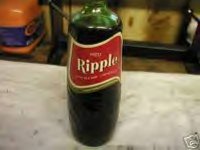I suspect that this thread was begun by someone who doesn't know wine, so wants to encourage others who are afraid of it to ridicule it because they don't know it, either, and are intimidated by it, as they'd be intimidated by discussions of art or refined music, anthropology, archaeology, astrology, astronomy, poetry, etc.
The net effect may be that when students doing research on gun control come here, they see affirmation of the stereotype that gun owners are just rednecked good ol' boys. And that is the stereotype that our enemies want to prevail...
It will also make a very poor impression on educated, cultured adults who may be thinking of buying a gun and seeking instruction in its use.
If you might really want to learn about wine, there are classes, and magazines like, "Wine Spectator" help, although you need a background in wine to understand some of the articles and wines discussed.
Best is buying a basic book, like "Vintage" by Hugh Johnson or his other books. He's also published an annual pocket wine guide, as have others. Look at Barnes & Noble or other major booksellers, find a volume that meets your needs, and buy it.
Don't start out by buying the most expensive wines. You have to know wine before you can fully appreciate what gives them their reputations. Buy basic good brands like Robert Mondavi, Ch. Ste. Michelle (in Washington) and similar vintners. Columbia Crest is a best value maker. In Australia, the biggest names are the associated Penfold's and Lindeman's. Their famous Grange red costs about as much as Ch. Petrus from Pomerol, and that's saying something!
But most of their wine runs from maybe $8.00-$15.00. Try Bin 45 Cabernet and Bin 65 Chardonnay. The latter will not taste like Chardonnay grown in northern climes, but has its own unique appeal.
Some people will just never "get" wine. I have a longtime friend who is one of the most respected writers about custom knives. A French society of custom cutlers invited him and some US knifemakers to France to exchange ideas and to learn new things, and to enjoy meeting one another.
The hosts served some excellent meals, with sometimes very fine wines. My pal says they all remind him of cough syrup. I guess he has issues in his palate that preclude tasting the subtle aspects of wines.
As for bouquet, yes, it's there. I've opened some "big" reds and the aroma filled the room. One South African Pinotage was especially impressive that way, after my then-wife had refrigerated it. Red wine should not be chilled in most cases, just served at cool room temperature. After that Pinotage warmed a little, it settled down and was a good bottle.
I think it was Arik who mentioned "legs" in the glass. That tells you the glucose content, the "fatness" of the wine. You don't want that sign to be too thin.
Be very aware that imported wines often sit in the heat on docks in summer. Learn the signs of a bottle that may be ruined by that. American wines are less likely to be damaged in transit. (Of course, in France or Germany, the opposite is true.) Most grocers here do not understand wine or most other refined things. You need to do the research. Try to locate a good grocer or liquor store that has a knowledgeable wine staff. But when you learn, some really good buys are in grocery stores. I've bought a whole bottle of Columbia Crest chardonnay for what a single glass cost me in Red Lobster. And it was a good value at restaurant prices.
You won't learn much about bouquet or other wine traits by drinking Boone's Farm or MD 20/20. But get to know fine wines well, and you'll add a new, worthwhile dimension to your life.

